William Westenhaver - The Primitive Modern
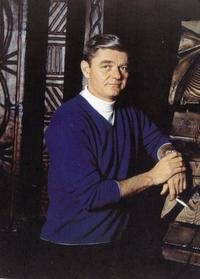 By the late 50s, Tiki-fever was in full swing and Americans couldn’t get enough of it.
By the late 50s, Tiki-fever was in full swing and Americans couldn’t get enough of it.
Tiki temples and Polynesian-themed bowling alleys, golf courses, television shows and pop music saturated the land from coast-to-coast.
But strangely enough, Tiki’s presence was still largely missing from the ultimate mid-century sanctuary: the American home.
That would soon change with the mass production of primitive décor and home furnishings that made it possible for Americans to finally bring Polynesia right into their own living rooms.
Tiki’s ultimate triumph was due largely to cartoonist and artisan William Westenhaver.
A would-be graphic designer and painter, Westenhaver studied at the Art Center School of Design in Los Angeles during the late 40s. His early works showed the large influence of Picasso and early-century European impressionists and expressionists, who themselves often used imported Polynesian primitiva as sources of inspiration. Westenhaver was no stranger to it either, having visited Melanesia during his time in the Navy. It was here in the Admiralty Islands that he witnessed the natives carving their ancestral deities into everyday utensils and furnishings.
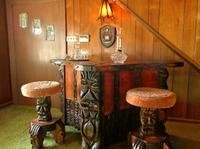 Yet it wasn’t until the late 50s that Westenhaver would finally be able to fuse his own modernist artistry with the native kinds he had observed.
Yet it wasn’t until the late 50s that Westenhaver would finally be able to fuse his own modernist artistry with the native kinds he had observed.
In 1957, his cousin Bob Post called and asked if he could help design some of the primitive artifacts his Western International Trading Company (WITCO) was importing from Mexico.
Still eking out a living as a cartoonist, Westenhaver jumped at the chance and moved with his family to Mt. Vernon, WA.
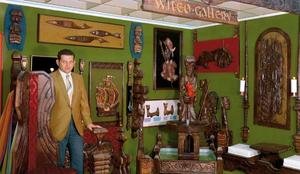
Here, he and the other WITCO artisans began carving and chain-sawing an array of unusual tribal designs into bedposts, tables, chairs and any other home furnishing you could think of, often accenting them with striking leopard-skin prints. Island décor such as masks, spears, statues and even home tiki bars followed.
This “Pop Primitivism”, or Modern Primitive, was a perfect complement to the clinical, steel-and-glass minimalism of American architecture at the time, giving homes the aura of a worldly and exotic whimsy.
And it wasn’t just the fancy of Middle American eccentrics, either.
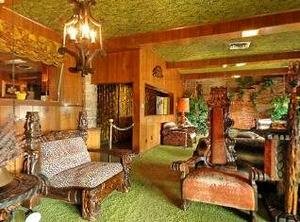 Elvis Elvis Presley’s Graceland Mansion had a special “Jungle Room” outfitted with nothing but WITCO furnishings. Popular icons Hugh Hefner and Roy Orbison also decorated their abodes with them, too.
Elvis Elvis Presley’s Graceland Mansion had a special “Jungle Room” outfitted with nothing but WITCO furnishings. Popular icons Hugh Hefner and Roy Orbison also decorated their abodes with them, too.
By the late 60s, with WITCO having showrooms in most major American cities, Tiki had finally conquered the final American frontier.
Yet, with nowhere else to go, the end was inevitable.
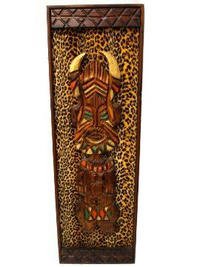 After the cultural cataclysm of the late 60s and early 70s, WITCO’s fortunes began to decline, and in 1977, it closed it doors.
After the cultural cataclysm of the late 60s and early 70s, WITCO’s fortunes began to decline, and in 1977, it closed it doors.
Although Westenhaver went back to work as a freelance artist, the story doesn’t end there.
As the Tiki revival bloomed in the 90s, Westenhaver’s grandson-in-law, Ken Pleasant, picked up the torch and now carves his own WITCO-style furniture, much to his grandfather’s delight.
